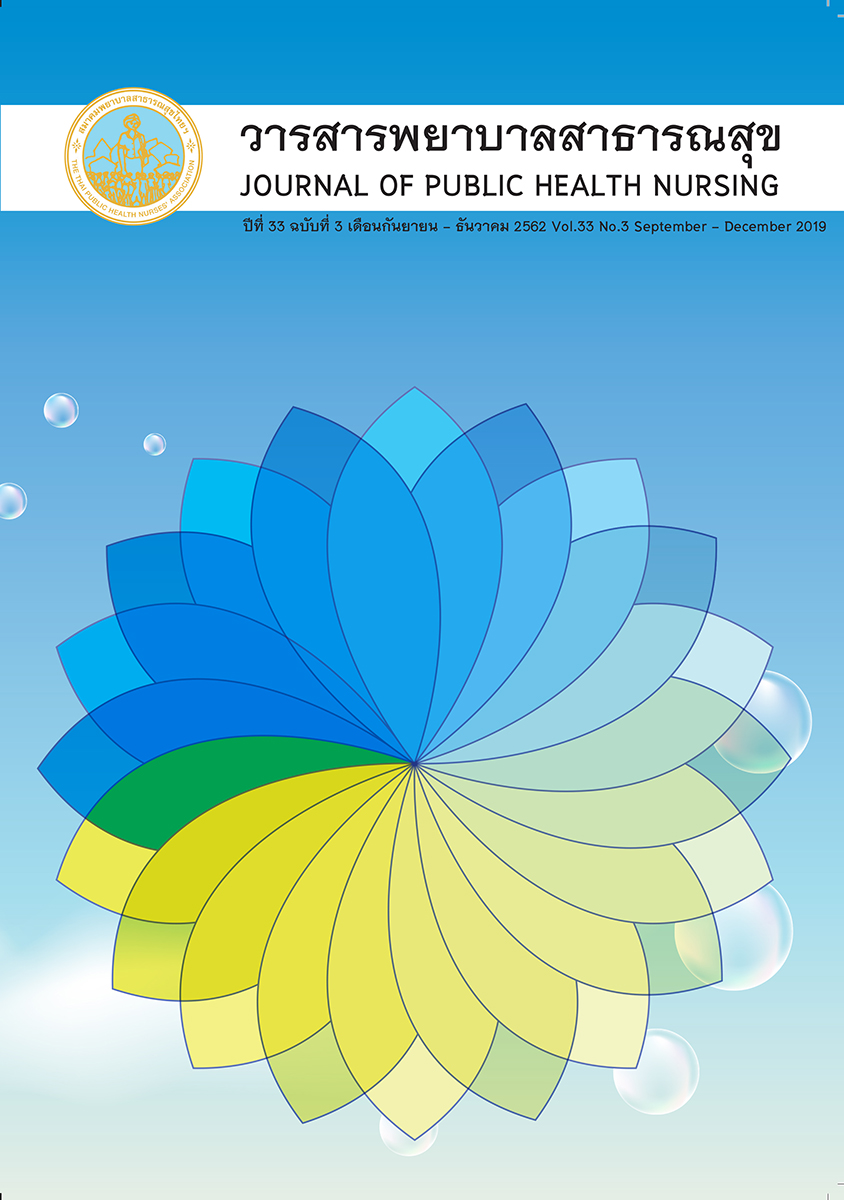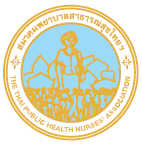Safety in Workplaces and Factors Influencing Work Safety Behavior among Pregnant Women Working in the Industries in the East Coast Area of Thailand
Keywords:
maternity nurse, self-efficacy, perceived barrier, pregnant women, work safety behavior, safety in workplacesAbstract
Having a career as an industrial worker while pregnant might adversely affect a pregnant women’s and/or their fetus’s health. Especially inappropriate working behavior could cause detrimental effects during pregnancy outcome. This descriptive research aimed to investigate safety in workplaces and factors influencing work safety behaviors among pregnant women working as industrial workers on the east coast of Thailand. Participants included 400 pregnant women working in factories and receiving antenatal care services in Samutprakan, Chachoengsoa and Chonburi provinces. Multistage random sampling was used to select subjects. Data were collected by questionnaire to record demographic data; characteristics of jobs; knowledge about work safety; believe in workplace safety; perceived benefit, perceived barriers, and perceived self-efficacy in having work safety behavior; received work safety support; and work safety behaviors. Data were collected at an antenatal care private clinics located in industrial areas during March to May 2018, and analyzed by descriptive statistics and multiple regression analysis.
Results revealed that participants had high mean scores for safety in the workplace (x̄ = 8.70, S.D. = 1.63), and 56.9% of those worked over 40 hours per week, 46.0% worked by repetitively using their hands and wrist, and 43.8% sat longer than 2 hours when working. Factors inducing believe in their workplace safety, perceived self-efficacy and perceived barrier in work safety behavior, and age explained 16.4% of the variance in work safety behaviors. Findings recommend that maternity nurses may encourage pregnant workers to gain their perceived self-efficacy and their perceived barriers to work safety behaviors.
References
National Statistical Office. Labor statistics [Internet]. 2017 [cited 2017 Jan 30]. Available from http://statbbi.nso.go.th/staticreport/page/sector/th/02.aspx.
Salihu HM, Myers J, August EM. Pregnancy in the workplace. Occupational Medicine 2012; 62: 88-97.
Magann EF, Evans SF, Chauhan SP, Nolan TE, Henderson J, Klausen JH, et al. The effects of standing, lifting and noise exposure on preterm birth, growth restriction, and perinatal death in healthy low-risk working military women. J Matern Fetal Neonatal Med 2005; 18: 155-62.
Bonzini M, Coggon D, Godfrey K, Inskip H, Crozier S, Palmer KT. Occupational physical activities, working hours and outcome of pregnancy: findings from the Southampton Women’s Survey. Occup Environ Med 2009; 66: 685-90.
Niedhammer I, O’ Mahony D, Daly S, Morrison JJ, Kelleher CC. Occupational predictors of Pregnancy outcomes in Iris working women in the Lifeways cohort. An International Journal of Obstetrics and Gynaecology 2009; 116: 943- 52.
Lindbohm M, Sallmen M, Tasklnan H. Reproductive hazards of occupational and environment exposures [Internet]. 2013 [cited 2016 Feb 10]. Available from http://www.sciecediret.com/article/pii/B978012384978600 0406.
Rungsripitak A, Thiramanut T, Sangchan S, Chanchai S. Working Condition, Safety and Effects on Pregnant Worker in the Eastern Seaboard Development Area. [Research report]. Chonburi: Faculty of Public Health, Burapha University; 2005.
Banerjee B. Physical hazards in employment and pregnancy outcome. Indian J Community Med 2009; 34(2): 89-93.
Family Network Foundation. Maternity protection for female workers; law and practice [Internet]. 2000 [cited 2018 May 29]. Available from http://www.familynetwork.or.th/node/15541.
Ratana P. Factor relating to work safety behavior of industrial workers in the seafood industrial groups of the Andaman seashore provinces. [M.P.H. Thesis in Industrial Environment Management]. Bangkok: Faculty of Public Health, Sukhothai Thammathirat Open University; 2008.
Yuwatamee C. Relationships between selfefficacy, social support from employer and work safety behavior of industrial operation workers in Nonthaburi Province [Thesis]. Bangkok: Ramkhamheang Open University; 2009.
Pan OM. Factors relating to work safety behavior of workers in Quarraying and crushing plant of Andaman seashore provinces. [[M.P.H. Thesis in Industrial Environment Management]. Bangkok: Faculty of Public Health, Sukhothai Thammathirat Open University; 2010.
Pender NJ. Heath Promotion Model Manual. Michigan, United State: University Michigan [Internet]. 2011 [Cited 2016 February 20] Available from https://deepblue.lib.umich.edu/bitstream/handle/2027.42/85350/HEALTH_PROMOTION_MANUAL_Rev_5-2011.pdf
Panczyk M, Sołdan MW, Trzebiatowska HZ, Gotlib J. Health-enhancing behaviors of nurses in Poland and their association with shift work and age. Collegian 2018; 25(3): 255 - 61.
National Statistical Office. Labor women [Internet]. 2013 [cited 2018 Aug 27]. Available from http://service.nso.go.th/nso/web/article/article_64.html
Downloads
Published
How to Cite
Issue
Section
License
บทความที่ตีพิมพ์และแผนภูมิรูปภาพถือเป็นลิขสิทธิ์ของวารสารพยาบาลสาธารณสุข (Thai Public Health Nurses Association)







